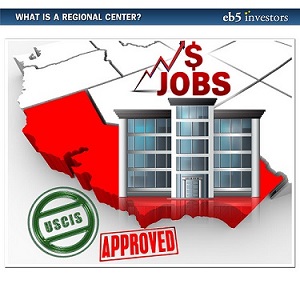

There are many advantages to receiving EB-5 Regional Center designation from USCIS for your business. Becoming a Regional Center is an attractive way for a business project to raise low interest debt, and, in some situations, equity. Raising capital via the EB-5 Immigrant Investor Program is quite unique compared to traditional sources of funding and EB-5 is an exciting and ever-evolving industry. The EB-5 program became more popular beginning in 2007 as traditional lending became tougher to obtain during the Great Recession. The program sunset on June 2021.
On Monday March 14, 2022, the President signed an omnibus spending package that included an EB-5 bill that provides, effective immediately, for a 5-year reauthorization of the Regional Center Program and other program changes. Several updates are to replace and/or amend the existing law and regulations promulgated thereunder. Section 203(b)(5) of the Immigration and Nationality Act (8 U.S.C. 1153(b)(5)). The EB-5 Regional Center industry has been waiting many years for these changes.
Those cases filed prior to June 30, 2021 are grandfathered and may be adjudicated to final conclusion. There are two ways of funding a project with EB-5 capital: through a direct investment or through a Regional Center. The Regional Center option can be more attractive to both project developers and investors, as the designation makes some USCIS requirements less stringent for EB-5 visa applicants. Regional centers are held to more favorable job creation requirements than direct EB-5 investment, which focuses on direct job creation. Rather than being required to create 10 direct full-time jobs, Regional Centers can satisfy EB-5 job creation requirements by creating 10 direct, indirect, or induced full-time jobs. Under RIA one in ten jobs must be a direct hire job for the nine other indirect jobs to qualify. The Regional Center is afforded the benefit of using economic multipliers to demonstrate the creation of these jobs. However, a particular organization’s specific needs will always determine whether or not Regional Center designation is most advantageous.
During the last two decades, many larger U.S. developers have utilized EB-5 financing as part of the project capital stack.
USCIS has currently interpreted Ria as cancelling all Regional Center designations and will require redesignation utilizing the new Form I-956, Application for Regional Center Designation issued on May 13, 2022. The redesignation interpretation is subject to litigation in Northern California requesting the court to find that the USCIS interpretation is not correct and that it does not reflect the clear intent of congress which is to keep the Regional Center program running.
A bipartisan letter dated May 9, 2022 from select congressional leaders suggests that some members of Congress did not intend to deauthorize all existing Regional Centers by passing RIA.

Not everyone can apply for Regional Center designation—no special licenses are required. However, there is a list of excluded owners and operators including foreign governments and US nonresidents. The term Regional Center refers to any economic unit, public or private, which is involved with the promotion of economic growth, including increased export sales, improved regional productivity, job creation, and increased domestic capital investment within the EB-5 program. The business models that are eligible to become EB-5 Regional Centers include governmental agencies, partnerships, corporations and any other existing U.S. commercial entity.
Each Regional Center must obtain its designation from USCIS. USCIS Regional Center designation entails a multi-step process that requires the input of various experts. The cost of obtaining Regional Center approval is highly variable. The actual application itself is to be filed on the new Form I-956 with a filing fee of $17,795. However, the overall cost of the application is substantially more and largely dependent on the fees charged by various EB-5 professionals, including, transactional, securities, tax and immigration lawyers, economists, and business plan writers. Many immigration law firms will take the central point of control of the case by coordinating with all the service providers and then reviewing and compiling all the documents to file the petition with USCIS.
A list of changes that impact all offerings

There are several steps that an organization must take to obtain EB-5 Regional Center approval from USCIS. The costs involved and the documents that need to be produced will depend on the readiness of the project. Each Regional Center filing should be accompanied by a request for a project approval that is sufficiently explained and documented as to become an exemplar for that project. This will be known as “application for approval of investment in a commercial enterprise.” Each subsequent project must file a plan for approval by USCIS. The sale of units for subsequent filing of the initial stage for the investor can only be filed once the Regional Center is formally designated as such AND an USCIS receipt is issued for the application for the approval of the project plan.
Below, we discuss the steps and additional documents required for each category.
Perhaps the most important step of the Regional Center approval process is for the business organization to determine the geographic scope and economic benefit of the projects for which the business organization is planning to use EB-5 financing. This includes determining the Regional Center geographic umbrella, corporate structure, operational business model, and required investment amount and the composition of the capital stack for the potential projects.
At a minimum the following documents are required:
This list is not comprehensive. Please consult with your professional advisors to tailor the requirements to the specific Regional Center and its projects.
Finally, with all these documents in place, the Regional Center can now submit the Form I-956 petition to USCIS. The regulations provide that once the initial Form I-956 is filed with USCIS, and the receipt for the application for permission to develop a specific project is in hand, the Regional Center can go to market and advertise its’ project(s). Please note however, the Regional Center cannot allow any individual investor to file a Form I-526 petition for any of the Regional Center’s projects until the Regional Center is designated as such by USCIS.
Persons involved with Regional Centers must submit biometrics and pass a background investigation. Identify all natural persons involved with the Regional Center. A person involved with the Regional Center entity includes any person in a position of substantive authority to make operational or managerial decisions over pooling, securitization, investment, release, acceptance, or control or use of any EB-5 capital from immigrant investors. Owners, officers, general partners, and other person in positions of “substantive authority” must be identified in the I-956 petition and must submit Form I-956H, Bona Fides of Persons Involved with Regional Center Program.
Form I-956 requires regional center applicants to have comprehensive policies and procedures for compliance with the strict new EB-5 program rules.
Applicants must describe the policies and procedures in place reasonably designed to monitor new commercial enterprises and any associated job-creating entity to seek to ensure compliance with all applicable laws, regulations, and Executive orders of the United States, including immigration, criminal, and securities laws, as well as all securities laws of the state where any securities offerings will be conducted, investment advice will be given, or the offerors or offerees reside.
Applicants for Regional Center designation must have a policies and procedures manual which explains how the Regional Center will comply with the EB-5 program new rules and requirements set forth in RIA.
Once the Form I-956 is approved, the Regional Center can now permit submission of the EB-5 investors’ Form I-526 petitions to USCIS. Form I-526 applications will outline the specific EB-5 project that the Regional Center will be sponsoring and will include either the documents outlined or will reference the documents so as to reduce the volume of paper submitted with each I-526 petition. While Form I-526 is a self-petition by an individual investor, it is critical to employ the services of experienced immigration counsel. Immigration counsel will shepherd investors through and review the Regional Center, the project, and assist the investor through each USCIS step of compliance. Approval of Form I-526 petitions enable individual EB-5 investors to start the process of obtaining their conditional green card so that they can live in the United States for two years. The investor will either proceed to do Consular Processing (CP) at a US Embassy or Consulate abroad or if the investor has not taken advantage of the newly created combined filing provisions under RIA, file for Adjustment of Status (AOS). RIA allows new I-526 filings and pending I-526 cases where a) the visa numbers for the country for filing the case are current; and b) where the investor is lawfully in the US, generally having been admitted in this lawful status at least 60 days prior to file for AOS.
The Regional Center must have comprehensive policies and procedures for compliance with the new strict EB-5 program rules. It must continue to monitor its investors and track the job creation requirements for its projects. The Regional Center must also be sure to comply with the requirements of RIA all applicable reporting to USCIS in compliance, and Securities and Exchange Commission and other state and local agencies that regulate securities.
As part of the U.S. government’s efforts to combat fraud and ensure program integrity, USCIS also conducts site visits of EB-5 Regional Centers and EB-5-funded projects/businesses. Each Regional Center is responsible to provide all requested documentation and other information as requested by USCIS for each of these site visits.
The final step of the EB-5 visa process for individual investor applicants is to file the Form I-829 Petition by Entrepreneur to Remove Conditions. This application demonstrates that the project and investor have met all the requirements of the EB-5 program. Once approved, Form I-829 enables the investors to obtain their lawful permanent resident status (permanent green card). Although the application is filed by the individual EB-5 visa applicants, the Regional Center and projects must provide evidence of meeting the job creation requirements as well as keeping the investor’s funds “at risk” for the requisite time period”.

Obtaining EB-5 Regional Center designation can be a daunting process possibly spanning a couple of years, but there are qualified and experienced EB-5 professionals who can help you through the process from a through z. They can and will advise you on your road to EB-5 success.
Do you want to create your own EB-5 regional center? Contact us today at info@eb5investors.com
Author’s note: This article is intended to give a general overview of the new EB-5 law under RIA. It is not meant to be a comprehensive treatise. Please consult with your appropriate professionals to get the full picture and any updates as the situation is currently very fluid and changes are anticipated frequently and soon. There will be clarifying and expanding regulations, forms, policy statements and court decisions over at least the next 12 months until the RIA new process settles down and becomes clearer on so many issues. There could even be additional legislation.